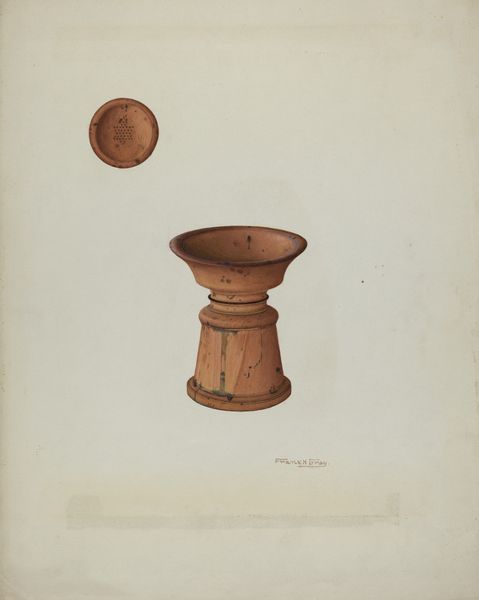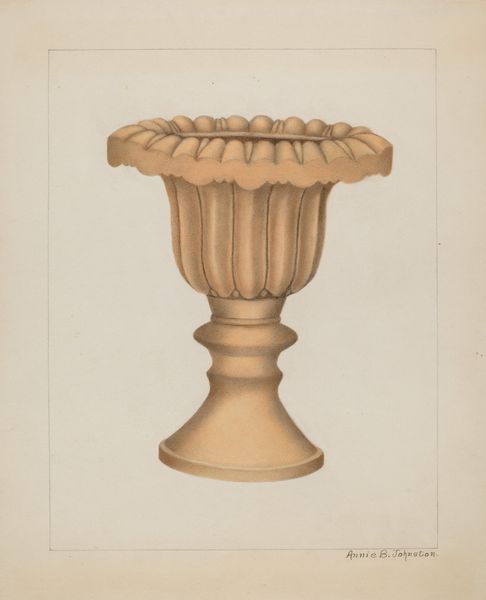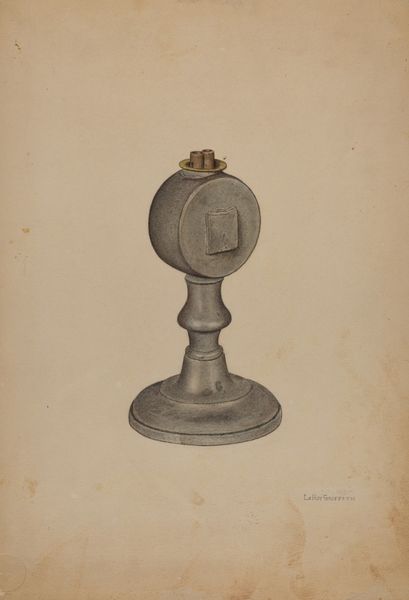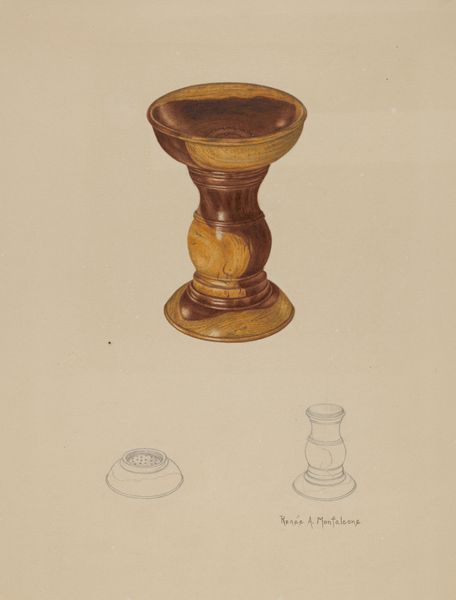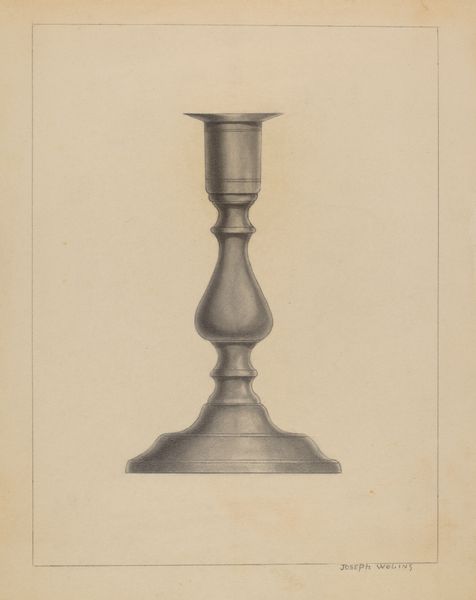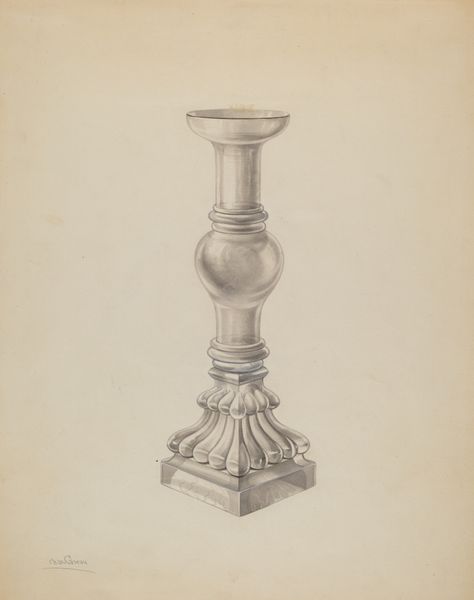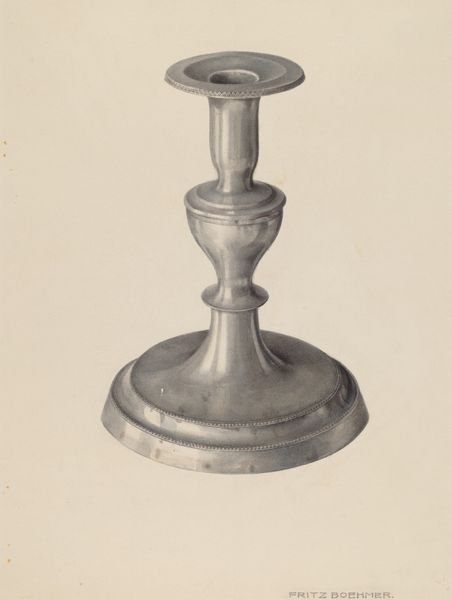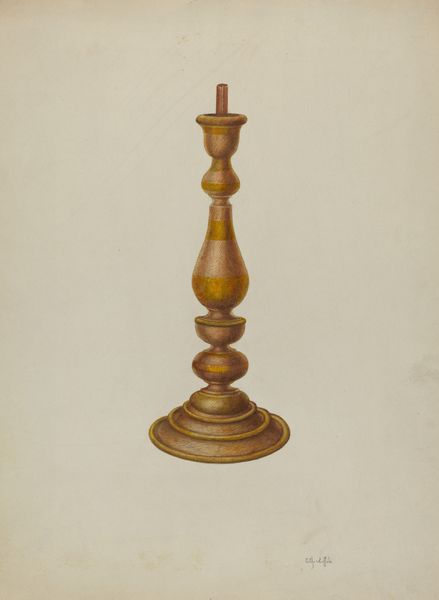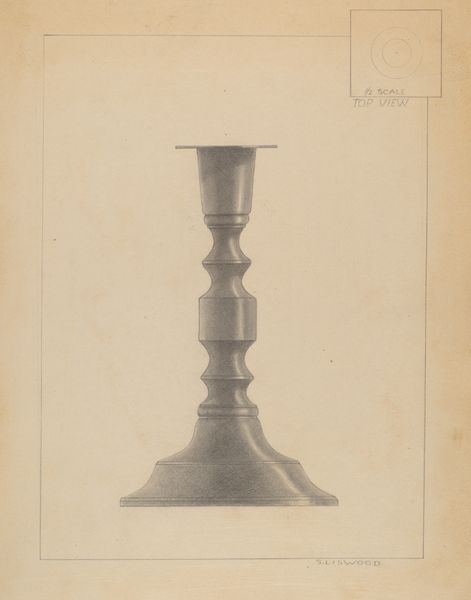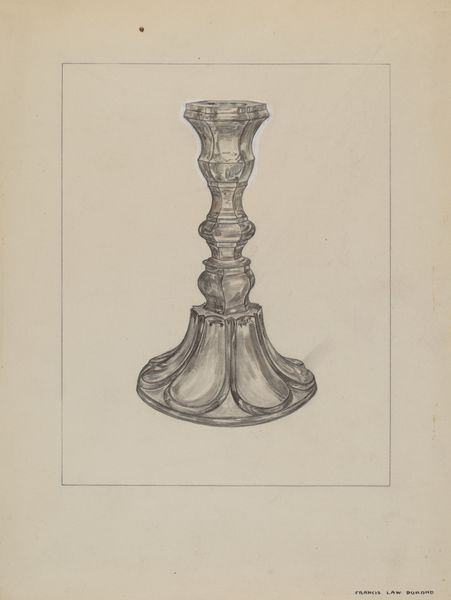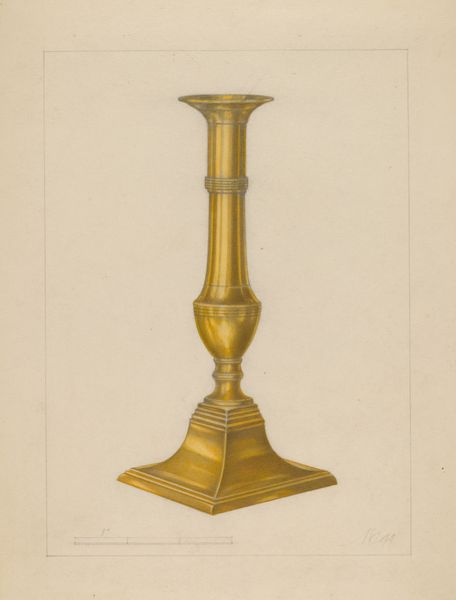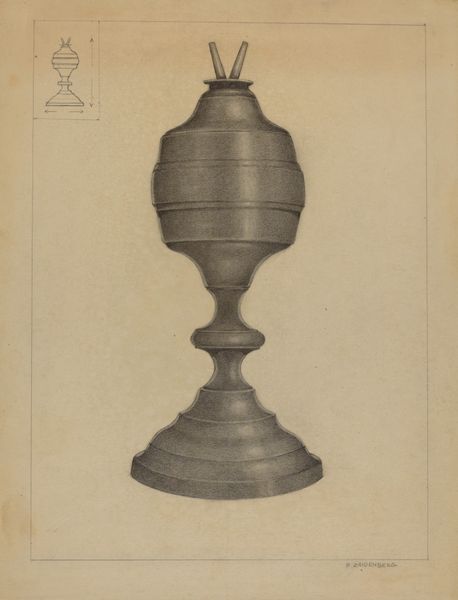
drawing, watercolor
#
drawing
#
water colours
#
watercolor
#
coloured pencil
#
watercolor
#
realism
Dimensions: overall: 30.5 x 23 cm (12 x 9 1/16 in.) Original IAD Object: 4" high; 3" in diameter
Copyright: National Gallery of Art: CC0 1.0
Curator: This is Edward L. Loper’s "Sand Sifter," created around 1936 using watercolor and colored pencil. Editor: Immediately, I’m struck by the intense focus on form and material. The earthy tones evoke a sense of rustic utility, like it's grounded in practical craft. Curator: Absolutely. The deliberate depiction of the object suggests Loper’s concern with the processes that went into crafting such a device. We need to think about where something like a sand sifter fits within a larger economic context, particularly regarding labor. Was this used locally? Editor: Good question. And where was it showcased or circulated, and who was able to access it? The drawing gives the artifact a sense of historical preservation as well, immortalizing this useful, maybe now forgotten object for display and documentation. Curator: I think about the use of watercolor versus, say, oil. There's a portability to watercolor and colored pencil that oil paints don’t offer, indicating maybe the artist moved about to depict labor and material production on site. Perhaps also that watercolors and pencils were simply cheaper or more readily available, shaping art through resource. Editor: That reminds me—look at how meticulously the artist replicated the woodgrain. It makes you wonder if the selection of those tones carries symbolic meaning, referencing nature or agriculture as a whole. I am also curious about those seemingly technical drawings along the top of the page. It almost reminds me of an early schematic used for patent purposes. Curator: Interesting. These were potentially sketches the artist used, acting as blueprints of their perception of how people made such sifters—suggesting this type of knowledge creation may come as close as an academic enterprise when seen as documentation. Editor: Right, these aren’t necessarily autonomous “artworks” in a gallery context, but tools to promote material studies in a broader societal understanding of labor practices during Loper’s time. Curator: Yes, and hopefully spark renewed discussion around art as more than aesthetics but cultural information! Editor: Indeed! Looking closely invites not just visual appreciation, but crucial analysis.
Comments
No comments
Be the first to comment and join the conversation on the ultimate creative platform.
